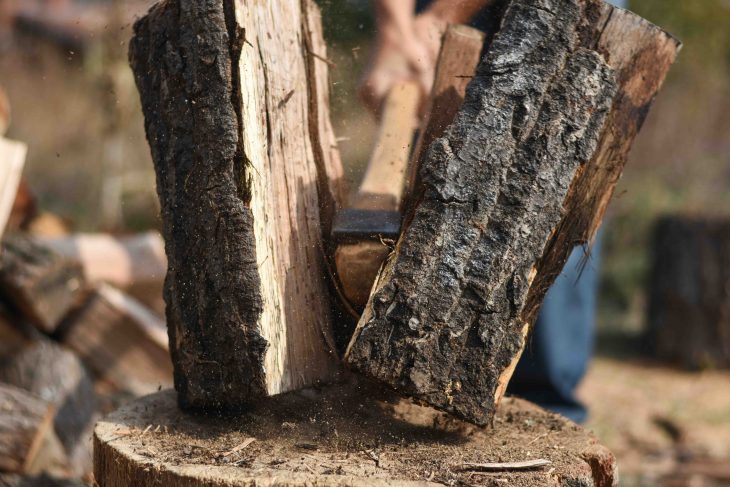
Wood, with its timeless appeal and remarkable versatility, has been an essential material for countless applications throughout human history. From the construction of buildings and furniture to artistic creations and everyday items, wood offers a unique blend of strength, beauty, and sustainability. In this article, we will explore 11 fascinating facts about wood that highlight its significance and charm. Let’s embark on a journey into the captivating world of this remarkable material.
Living History
Wood is a product of trees, which have been on Earth for millions of years. Each piece of wood carries a story, reflecting the unique characteristics and growth patterns of the tree it came from.
Nature’s Composite
Wood is a natural composite material composed of cellulose fibers held together by lignin. This combination gives wood its strength, flexibility, and durability.
Variety of Species
There are thousands of wood species found around the world, each with its own distinct characteristics, color variations, and grain patterns. From the rich reddish-brown hues of mahogany to the light and creamy tones of birch, wood offers a diverse palette of possibilities.
Renewable Resource
Wood is a renewable resource when harvested sustainably. Responsible forestry practices ensure the replanting and regeneration of forests, making wood a renewable and eco-friendly choice.
Natural Insulator
Wood is a natural insulator that provides excellent thermal and acoustic properties. It helps to regulate temperature, reduce energy consumption, and create a cozy and comfortable environment.
Historic Significance
Throughout history, wood has played a vital role in construction. From ancient temples and medieval cathedrals to modern timber-framed buildings, wood has been used to create structures that stand the test of time.
Artistic Possibilities

Wood has been a favorite medium for artists and craftsmen for centuries. Its unique texture, grain patterns, and ability to be carved and shaped make it an ideal canvas for artistic expression.
Environmental Benefits
Wood has inherent environmental benefits. It stores carbon dioxide, helps combat climate change, and has a lower carbon footprint compared to many other construction materials.
Strength and Resilience
Wood is a remarkably strong and resilient material. It has the ability to withstand heavy loads, absorbs shocks, and flex without breaking, making it suitable for various structural applications.
Woodworking Heritage
Woodworking is an ancient craft that has been passed down through generations. From intricate furniture designs to finely crafted musical instruments, woodworking combines skill and creativity to transform wood into functional and artistic masterpieces.
Ever-Evolving Field
Wood science and technology continue to advance, expanding the possibilities of what can be achieved with this versatile material. From engineered wood products to sustainable harvesting techniques, innovation in the field of wood continues to shape its future.
Final Thoughts
Wood, with its rich history, aesthetic appeal, and countless practical uses, continues to hold a special place in our lives. From the majestic forests to the masterful craftsmanship, wood invites us to appreciate its beauty and embrace its enduring qualities.
Frequently Asked Questions (FAQs)
Is wood a sustainable material?
Wood can be a sustainable material when sourced from responsibly managed forests. By ensuring replanting and proper forest management, wood becomes a renewable resource with minimal environmental impact.
How can I protect wooden furniture from damage?
To protect wooden furniture, avoid placing it in direct sunlight or near sources of heat. Use coasters for drinks, avoid spills, and regularly dust and clean the furniture with appropriate products.
Can wood be recycled?
Yes, wood can be recycled. It can be transformed into wood chips for use in landscaping or converted into engineered wood products. Recycling wood helps reduce waste and conserve natural resources.
What is the best wood for outdoor projects?
Woods like cedar, teak, and redwood are popular choices for outdoor projects due to their natural resistance to decay and insects. These woods require less maintenance and can withstand outdoor elements.
How can I restore the shine of old wood furniture?
To restore the shine of old wood furniture, clean it thoroughly and use quality wood polish or wax. Apply the product following the manufacturer’s instructions, and gently buff the surface for a renewed luster.
Was this page helpful?
Our commitment to delivering trustworthy and engaging content is at the heart of what we do. Each fact on our site is contributed by real users like you, bringing a wealth of diverse insights and information. To ensure the highest standards of accuracy and reliability, our dedicated editors meticulously review each submission. This process guarantees that the facts we share are not only fascinating but also credible. Trust in our commitment to quality and authenticity as you explore and learn with us.


